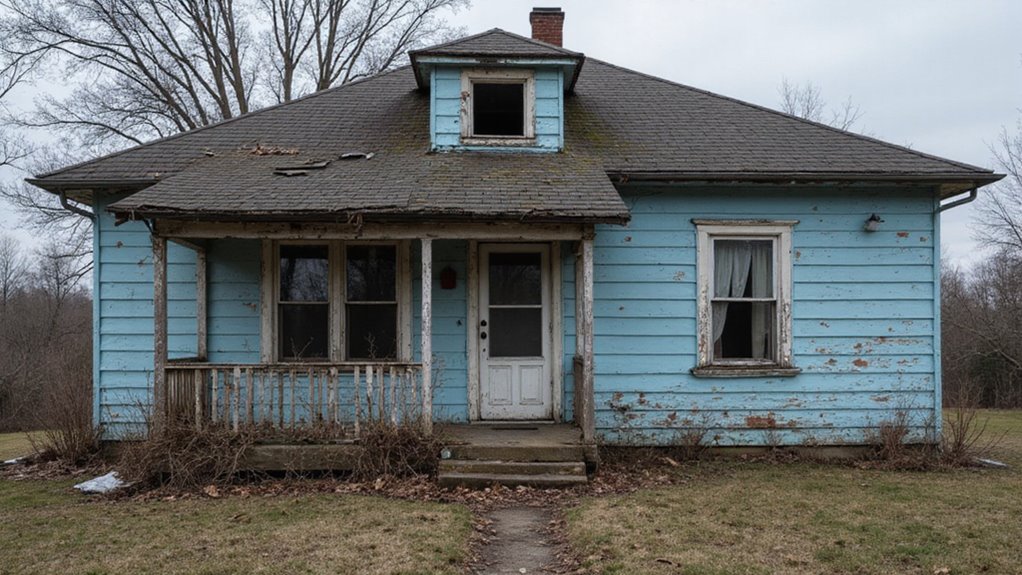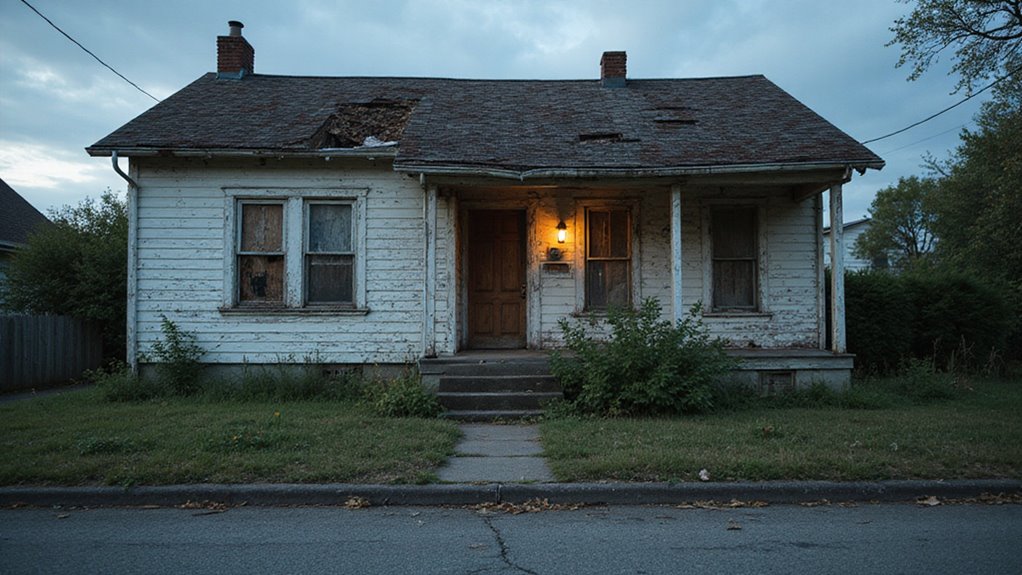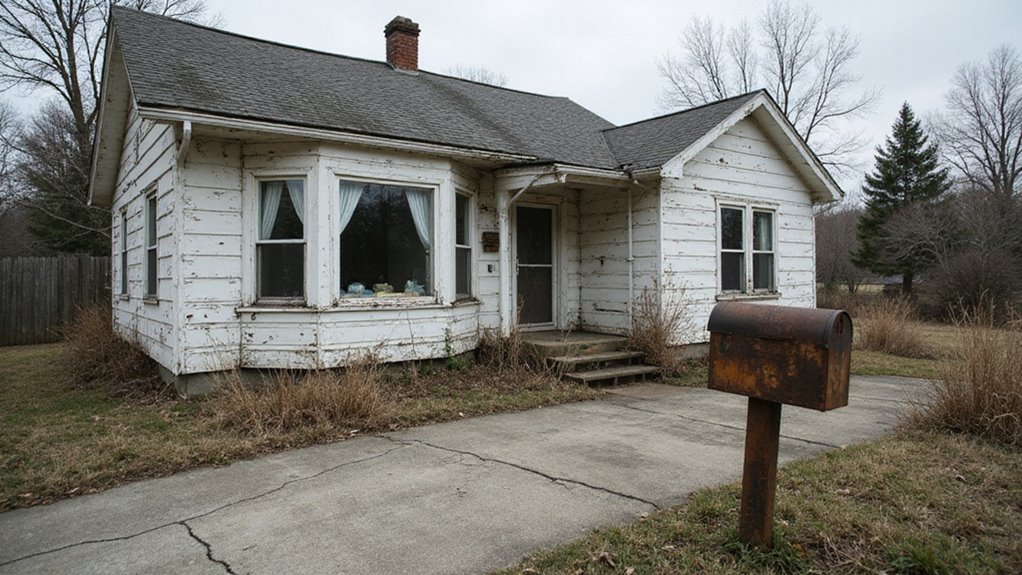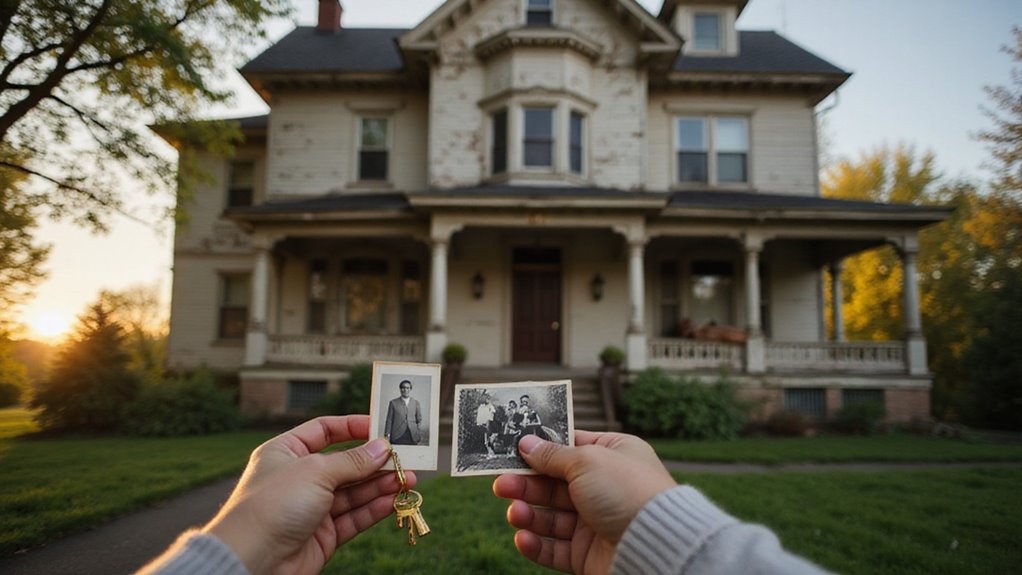Crumbling foundations and peeling paint don’t have to derail your home-selling dreams. Selling a property needing repairs creates stress for many homeowners facing tight timelines or limited funds. The prospect of investing thousands into a house you’re leaving behind feels wasteful, while showing it in poor condition might chase away potential buyers. Fortunately, several paths exist for successfully selling your imperfect property without breaking the bank.
Yes, you can absolutely sell a house that needs repairs. Many homeowners successfully sell “as-is” properties to investors, renovation enthusiasts, or bargain hunters looking for discounted opportunities. The key lies in setting realistic price expectations and being transparent about the property’s condition.
In this blog I will explore everything you need to know about selling a house requiring repairs.
Key Takeaways
- Yes, you can sell a house that needs repairs, often “as-is” to investors or cash buyers.
- Homes requiring repairs typically sell for 10-20% less than market value.
- Disclosing known defects is legally required during the sale process.
- Strategic repairs or pricing below market value can attract more buyers.
- Selling “as-is” can provide a quick transaction, especially with cash buyers or investors.
Can You Sell a House That Needs Repairs?

Yes, you can sell a house that needs repairs. Many properties sell “as-is” without fixing issues first. This option appeals to investors and cash buyers looking for renovation projects.
You’ll typically receive 10-20% less than market value for homes needing significant repairs.
The law requires you to disclose all known defects to potential buyers. This transparency protects you from future legal complications.
Instead of focusing on flaws, highlight the property’s potential. Present it as an opportunity for buyers who want to customize a home.
For some purchasers, the lower price point makes these properties more accessible than move-in ready homes.
The Impact of Property Damage on House Sales

Property damage typically reduces home sale prices by 10-20% compared to similar undamaged properties. Major structural issues, such as roof or foundation problems, can decrease value by up to 20%. Damage creates two significant challenges: it narrows your potential buyer pool and limits financing options, as lenders hesitate to fund purchases of damaged homes.
The solution is straightforward. Make critical repairs before listing whenever possible and provide complete documentation about any remaining issues. Additionally, consider adjusting your price expectations realistically if repairs aren’t feasible. By taking these steps, you’ll attract serious buyers rather than wasting time with lowball offers.
What Types of Property Damage Can Affect Home Value?

Property damage like foundation issues, roof leaks, or faulty wiring can drastically lower your home’s value and scare off buyers.
Water damage, pest infestations, and outdated features also reduce appeal and sale price.
Addressing these problems quickly is crucial to avoid losing money or legal trouble during the sale.
Structural Issues and Foundation Problems
Foundation cracks and bowing walls significantly decrease home value and repel traditional buyers.
Major structural problems can reduce offers by 10-20% or more. Immediate attention to these issues is essential. These defects signal potential danger to prospective purchasers.
Foundation repairs typically cost between $10,000 and $50,000. Most lenders hesitate to finance homes with serious structural damage. This limits your buyer pool dramatically. Only cash investors may consider such properties.
Market time extends considerably with foundation issues. Structural problems rarely remain hidden during inspections.
Professional assessment can identify repair options and provide cost estimates for potential buyers.
Roof and Water Damage
Unaddressed roof and water damage reduces home value and scares away buyers.
These issues signal expensive repairs and potential structural problems. Most buyers inflate the true cost of fixing such damage in their minds. This often results in much lower offers or no offers at all.
Early repairs create confidence in your property’s condition. Fixing these problems now leads to higher sale prices and faster transactions.
Roof repairs typically return 60-70% of their cost in improved home value. You also serve future homeowners by providing a safe, healthy living environment.
Smart sellers tackle water issues before listing to maximize returns.
Electrical and Plumbing Problems
Electrical and plumbing issues decrease home value and deter buyers. Address them immediately to protect your investment.
Outdated electrical systems create safety hazards and fail inspections. Replace faulty wiring, upgrade old panels, and install GFCI outlets in wet areas.
Leaky pipes cause water damage and mold growth over time. Furthermore, visible corrosion signals potential system failure to prospective buyers.
Modern buyers expect properly functioning systems that meet current regulations. All repairs should comply with local building codes to pass inspections.
Taking action now prevents negotiation leverage for buyers and maintains your asking price.
Cosmetic Defects and Outdated Features
Minor flaws and dated elements reduce home value and buyer interest. Chipped paint, worn carpeting, and ceiling stains create negative first impressions.
These issues often lead to lower offers or extended listing periods. Most buyers deduct $3-5 from their offer for every $1 in visible repairs needed.
Fix these problems before listing your property. Fresh paint, updated fixtures, and clean surfaces attract more potential buyers.
The investment typically returns 2-3 times its cost at closing. Additionally, homes with updated features typically sell 17-28 days faster.
Pest Infestation and Environmental Issues
Pests and environmental hazards significantly reduce your home’s value and sales potential. Termites, rodents, and insects can decrease property worth by 10-25%.
Quick professional extermination prevents further damage and restores buyer confidence.
Mold, asbestos, and lead paint require immediate remediation before listing. These hazards deter buyers and trigger costly inspection flags.
Furthermore, water damage lowers appraisals by 15-30% and suggests potential structural problems.
Home buyers avoid properties with unresolved environmental issues. Professional inspections identify these problems early.
Many lenders won’t approve mortgages for homes with active pest infestations or environmental hazards.
What Are Your Options for Selling a Damaged House?
You need to act fast and choose the best selling route for your damaged house.
You can sell as-is to traditional buyers or investors, make strategic repairs to boost value, or work with cash home buyers for quick closings.
Owner financing is also an option if you want flexible terms, but each choice has its risks and benefits.
Selling As-Is to Traditional Buyers
Traditional buyers will consider damaged houses if priced right. Set your price below market value based on repair estimates. Homes sold as-is typically fetch 70-85% of their repaired value in most markets. Emphasize potential rather than current condition.
Be transparent about all known issues upfront. This honesty prevents future negotiations falling apart.
Clean the property thoroughly and remove personal items. First impressions matter even with fixer-uppers.
In addition, target marketing to renovation-minded buyers and investors. These buyers actively search for improvement opportunities.
Prepare detailed repair estimates to help buyers understand the investment required.
Making Strategic Repairs Before Listing
Focus on fixing major issues before you sell your home. Essential repairs like roof, HVAC, and plumbing problems should be your priority.
Getting professional estimates helps determine if repair costs will yield good returns. Fresh neutral paint offers buyers a blank canvas for their vision. This approach attracts more potential buyers including investors.
Your home will likely sell faster when key problems are addressed upfront. Many buyers walk away from properties needing significant work.
Smart repairs now can prevent price negotiations later. Consider this investment carefully—it often leads to higher sale prices and fewer days on market.
Working with Real Estate Investors
Real estate investors offer a convenient solution for selling damaged properties quickly. You can get cash offers that accelerate closing times. These buyers purchase homes as-is, eliminating repair costs and open houses.
Investors specifically look for bargain properties they can renovate for profit.
Expect to receive 20-30% below market value when selling to investors. However, this discount is offset by avoiding repair expenses and carrying costs. The transaction typically closes in 7-14 days rather than months.
Additionally, you won’t pay agent commissions or staging costs.
This approach works best for sellers who prioritize speed and simplicity over maximum profit. Most investors handle paperwork and closing details themselves.
Exploring Cash Home Buyer Companies
Cash home buyers purchase damaged properties as-is for quick sales. They offer a streamlined process that closes within 10-60 days without requiring repairs. Expect offers around 10-20% below market value. This option eliminates repair expenses, real estate commissions, and prolonged negotiations.
Many homeowners find this approach valuable when facing time constraints or property damage issues. The process typically involves a property assessment followed by a no-obligation offer. As a result, you gain financial certainty and stress reduction during challenging circumstances.
These companies serve local communities by revitalizing properties others might avoid. Their business model focuses on volume rather than maximizing profits on individual homes.
Considering an Owner Financing Arrangement
Owner financing offers a practical solution for selling damaged houses when banks won’t help. You can sell to buyers who can’t qualify for traditional loans. You control the terms, including down payment amounts and interest rates. Your property sells faster while generating steady income.
This approach creates a win-win situation. You receive consistent payments over time. Buyers access properties they couldn’t otherwise afford. Furthermore, you avoid expensive holding costs and lengthy market exposure.
Owner financing typically requires 10-30% down payments and interest rates 1-4% higher than conventional loans.
The arrangement must comply with state-specific seller financing regulations. Consider consulting with a real estate attorney before proceeding.
How to Determine If You Should Repair Before Selling?
You need to decide quickly whether repairs will enhance your sale price enough to justify the cost.
Conduct a pre-listing inspection, crunch the numbers on repair costs versus possible value gains, and evaluate your local market conditions.
Consult with real estate pros to make an informed choice that aligns with your timeline and financial goals.
Conducting a Pre-Listing Home Inspection
Pre-listing home inspections identify problems before putting your house on the market. They reveal hidden issues like mold or structural damage that could reduce your selling price.
Critical problems should be assessed first, including foundation cracks, water damage, or electrical hazards. This advance knowledge prevents surprises during buyer inspections.
You can then make strategic decisions about necessary repairs. Some updates, especially to major systems like the roof or HVAC, typically provide good return on investment.
Furthermore, inspection results allow you to disclose home conditions honestly. This transparency builds trust with potential buyers and often leads to smoother negotiations.
Calculating Repair Costs vs. Potential Value Increase
Compare repair costs directly to expected value gains before deciding. Major repairs like roofing ($7,000-$15,000) and HVAC ($5,000-$8,000) require careful evaluation.
These significant investments must generate equal or greater returns to justify the expense.
Research your local real estate market thoroughly. Smart sellers consult professional appraisers or real estate agents for accurate assessments. Additionally, online home value estimators can provide preliminary insights.
The decision ultimately depends on your timeframe and financial situation.
In most cases, necessary repairs yield better returns than cosmetic upgrades. As a result, focus on fixes that address structural or functional issues first.
Analyzing Your Local Real Estate Market
Research your local market before making repair decisions. Home values depend on three key factors.
Homes needing updates typically sell for 17% less than updated properties. Look at recent comparable sales in your neighborhood. Market preferences matter too. Some areas favor move-in ready homes, while others have buyers seeking discount opportunities.
The average days on market statistic reveals whether repairs might be worthwhile. Fast-selling neighborhoods may require fewer improvements to attract buyers.
Slower markets often benefit from strategic updates that differentiate your property.
Your best strategy depends on these specific conditions in your immediate area.
Assessing Your Timeline and Financial Situation
Your money situation and selling timeline determine whether repairs are worthwhile. Consider repair costs against potential value increase. Major repairs like roofs or HVAC systems cost more but significantly boost buyer appeal.
Minor cosmetic fixes offer better return on investment with less time investment.
Evaluate your budget and selling timeframe honestly. Limited funds might make repairs impractical despite potential benefits. Similarly, urgent sales timelines may not accommodate lengthy repair projects.
However, small improvements often pay for themselves quickly.
In the end, balance what you can afford against your selling goals.
Consulting with Real Estate Professionals
Real estate professionals offer valuable insights before you sell your property. They can help determine if repairs are worthwhile investments.
Start by requesting a comparative market analysis from your agent. This analysis compares your home to similar properties recently sold in your area. Ask which affordable repairs might increase your home’s value most.
A pre-inspection can reveal hidden problems before buyers discover them.
Furthermore, professional guidance helps you avoid costly renovation mistakes. Real estate agents understand current buyer preferences in your market. Their strategic advice can ultimately maximize your selling price and reduce time on market.
What Are the Benefits of Selling to Cash Home Buyers?
Selling to cash home buyers lets you close quickly, often in just weeks, so you can access funds fast.
You won’t need to make repairs or worry about financing falling through, simplifying the entire process.
This approach also cuts down on holding costs and reduces the chances of deal delays, giving you peace of mind.
Quick Closing Process
Cash home buyers complete transactions in 10 to 14 days instead of the typical 30 to 60 days. This rapid timeline eliminates waiting for bank approvals or financing contingencies. You receive your money immediately after closing.
The process skips traditional hurdles like repair negotiations and lengthy inspections. Your property sells as-is, removing stress and uncertainty. Additionally, you save on holding costs such as mortgage payments and utilities.
Furthermore, cash buyers require minimal paperwork compared to conventional sales. This streamlined approach frees you to move forward with other priorities.
Many sellers appreciate the certainty of a guaranteed sale without the risk of buyer financing falling through.
No Repair Requirements
Cash home buyers purchase properties in as-is condition. You won’t need to fix anything before selling. This eliminates the stress of making costly repairs or upgrades to attract traditional buyers.
The process saves both time and money. Most distressed properties require $5,000-$15,000 in repairs before listing on the open market. Instead, you can redirect those funds toward your next home or investment.
Furthermore, avoiding repairs means faster closings. You can often complete the entire transaction in 7-14 days rather than months.
This quick timeline provides immediate relief for those facing financial challenges or needing to relocate quickly.
Avoiding Financing Complications
Cash buyers eliminate mortgage-related delays in home sales. You’ll close much faster than with traditional buyers. The approval process disappears completely.
Your closing timeline shrinks to just 10-60 days. This quick turnaround helps you move forward with your plans.
Furthermore, you won’t need to make repairs before selling. The process skips costly inspections and formal appraisals.
As a result, your closing costs decrease significantly. You keep more money from your sale.
This straightforward approach benefits everyone involved. In addition, you’ll experience less stress throughout the transaction.
Reducing Holding Costs
Cash home buyers help cut your monthly expenses fast. Most transactions close in 10 to 30 days instead of months on the traditional market.
The average homeowner saves over $1,700 monthly in holding costs. This includes mortgage payments, property taxes, insurance, and utilities.
You won’t need to pay for repairs or renovations before selling. The quick closing process prevents financial drain from these ongoing expenses.
Furthermore, your capital becomes available sooner for other purposes. This financial freedom allows you to move forward with your plans without delay.
Many sellers use these savings to fund their next home purchase or other important goals.
Simplified Transaction Experience
Cash home buyers eliminate traditional listing complexity. You’ll close faster, typically within 10 to 60 days, unlike conventional sales that take months.
No repairs or renovations are needed when selling to cash buyers. This saves time and thousands in preparation costs.
Additionally, cash sales involve lower fees, which increases your final profit.
The streamlined process helps homeowners transition quickly during life changes. For example, those facing foreclosure or relocating for work benefit from this efficiency.
Above all, the simplified experience reduces stress while maximizing your financial outcome.
How to Prepare a Damaged House for Any Sale Type?
You need to disclose all known issues clearly to stay compliant and avoid legal trouble.
Price the property competitively, considering repair costs and local market trends, to attract the right buyers.
Highlight its capability and unique features to offset damage, and gather accurate repair estimates to build trust and promote smooth negotiations.
Proper Disclosure of Known Issues
You must disclose all known problems with your property to avoid lawsuits. This includes:
Sellers must document all structural issues, water damage, and plumbing problems. Provide copies of previous inspection reports when available.
Let buyers know about needed repairs before they make an offer. These disclosures protect both you and the buyer legally. Honest communication builds trust with potential buyers.
Furthermore, transparency prevents deals from falling apart later during inspections.
Most states require specific disclosure forms by law. Complete these thoroughly to stay compliant and avoid future liability.
Pricing Strategy for Damaged Properties
Price damaged properties 10-20% below comparable move-in-ready homes. This discount accounts for repair costs buyers will face. Conduct a thorough market analysis to determine the baseline value. Compare only similar properties in your neighborhood.
Repair estimates from licensed contractors strengthen your pricing justification.
Be transparent about all property defects in your listing. This honesty builds trust with potential buyers. Focus marketing on the property’s potential rather than current condition.
Investors and renovation-minded buyers represent your target market. They look specifically for discounted properties with upside potential.
Your pricing strategy should balance attracting these buyers while still maximizing your return.
Highlighting Property Potential and Positive Features
To highlight a damaged property’s potential, focus on its permanent strengths rather than fixable flaws. Showcase the location, lot dimensions, and floor plan first. These foundational elements can’t be changed and often determine a property’s true value.
Fresh neutral paint creates an immediate visual improvement. Professional photography captures unique architectural details and natural light advantages.
Most buyers struggle to see past damage and disrepair. Your strategic presentation helps them visualize the possibilities.
Furthermore, highlighting positive features justifies your asking price despite the property’s condition. This approach attracts both investors and renovation-minded buyers seeking value.
Gathering Repair Estimates for Buyers
You should obtain multiple repair quotes from licensed local contractors before selling a damaged property. These estimates help buyers understand exact repair costs and timeframes.
Clear documentation with photos builds trust and demonstrates transparency about property issues. Contractors can identify problems you might miss, creating more accurate disclosures.
Most states require sellers to disclose known defects to potential buyers. This honesty prevents future legal complications.
The detailed estimates also give buyers negotiating leverage while setting realistic expectations. Many buyers appreciate this preparation, making your property more attractive despite its condition.
Creating Appealing Marketing Materials
Compelling marketing materials showcase a property’s potential while maintaining honesty about its condition. Focus on strong location benefits and structural advantages in your listings.
Professional photography makes even damaged properties look their best. Disclose all known issues upfront to build trust with potential buyers.
Quality marketing attracts investors who recognize opportunity in distressed properties. Transparency about problems prevents wasted time and builds credibility.
Moreover, clear communication sets realistic expectations from the beginning.
Fast action is essential when selling damaged properties. Properties with effective marketing typically attract serious buyers within the first two weeks of listing.
How to Sell Your Damaged House to Prestige Investments Cincinnati
To sell your damaged house to Prestige Investments Cincinnati, start with a quick property evaluation so we can determine its value fast.
Next, understand how our cash offer is structured and gather the necessary documents to streamline the process.
Act now—our typical timeline from offer to closing is rapid, ensuring a hassle-free sale without costly repairs.
Initial Property Evaluation Process
Property evaluation begins by identifying all damage issues. You should document structural problems, water damage, and electrical concerns.
A professional home inspection reveals hidden issues that might affect your selling price.
Compile a list of essential repairs and their estimated costs. This information helps set realistic price expectations.
Take clear photos of both damaged areas and positive features.
Investors want to know potential renovation costs before making offers. Your honesty builds trust and speeds up the selling process.
Properties with well-documented conditions typically receive faster offers from serious buyers.
Moreover, a thorough evaluation prevents surprises during negotiations.
Understanding Our Cash Offer Structure
Cash offers for damaged houses are based on the property’s current condition. The company provides transparent, no-obligation offers with closing timelines between 10 and 60 days.
You can receive up to $10,000 as an upfront payment before closing. No real estate commissions apply to these transactions.
The process eliminates hidden fees that typically surprise sellers during traditional sales. Each offer reflects your specific situation and property needs.
Furthermore, you won’t need to make repairs or improvements before selling. As a result, you can move forward quickly without the usual selling hassles.
Required Documentation and Paperwork
You must gather these essential documents to sell your damaged house to cash home buyers like Prestige Investments Cincinnati. This includes completed disclosure forms detailing all known property issues or defects, proof of ownership such as your deed, title report, and any relevant legal documents, as well as current tax statements, recent utility bills, and records of past repairs or maintenance. These papers create transparency between you and the buyer.
A complete documentation package not only speeds up the closing process but also protects both parties legally and prevents delays during the transaction. Additionally, having organized records demonstrates your seriousness as a seller, making the sale smoother and more efficient.
Typical Timeline from Offer to Closing
The process typically takes 2-4 weeks from accepted offer to closing. After accepting Prestige Investments Cincinnati’s offer, paperwork begins immediately. Inspections usually complete within the first week.
The standard closing timeline is approximately 30 days. This period includes title searches, home appraisal, and required disclosures.
However, each sale differs based on property condition and documentation.
Be aware that negotiations may extend this timeline. The buyer might request repairs or price adjustments after inspections.
In most cases, a smooth transaction follows the initial schedule without delays.
Steps for a Smooth Transaction
Prepare these key items to ensure a smooth transaction with Prestige Investments Cincinnati. First, gather all property documentation including title deeds and maintenance records.
Second, complete any requested inspection reports quickly. Properties must be priced according to current market conditions in your neighborhood.
Third, be honest about damage while emphasizing investment potential. This preparation prevents delays and builds trust with buyers.
A transparent approach leads to faster closings. Many sellers find that organizing paperwork in advance saves significant time later.
Furthermore, realistic pricing attracts serious investors rather than tire-kickers.
Ready to Sell Your Damaged House Without the Hassle?
You can sell your damaged house quickly and easily to cash buyers.
These investors purchase properties in any condition without requiring repairs. You’ll benefit from a faster closing timeline that reduces your stress and carrying costs.
No repairs are needed, which can save you thousands of dollars in fix-up expenses.
The process is straightforward. Simply disclose all known issues honestly to potential buyers. This transparency builds trust and prevents future legal complications.
Furthermore, targeting the right buyers—specifically investors and renovation specialists—will speed up your sale.
As a result, you can move forward with your life sooner rather than later.
Frequently Asked Questions
At What Point Is a House Not Worth Fixing?
You shouldn’t fix a house if repairs cost over 30% of its value, major structural issues exist, or safety hazards outweigh significant profit. Prioritize quick, honest sale options to serve buyers efficiently and avoid unnecessary financial loss.
Can You Sell Your House if It Needs Repairs?
Yes, you can sell your house needing repairs. Did you know 1 in 60 U.S. homes files water or freezing damage claims annually? Disclose issues fully, price wisely, and consider cash buyers for quick, hassle-free transactions that help others transform the property.
Is It Hard to Sell a House That Needs Work?
Selling a house that needs work is challenging, but you can succeed by pricing it right, providing full disclosures, and targeting cash buyers or investors. Act quickly, be transparent, and highlight its capability to serve eager buyers efficiently.
How Much to Offer on a House That Needs Work?
Consider your offer as a tightrope walk—balance is key. You should start 10-20% below market value, factoring in repair costs. Act swiftly, negotiate carefully, and prioritize transparency to serve both your interests and future buyers.





